Articles and Features
The Other David Lynch – The Paintings of Contemporary Cinema’s Master of Surrealism
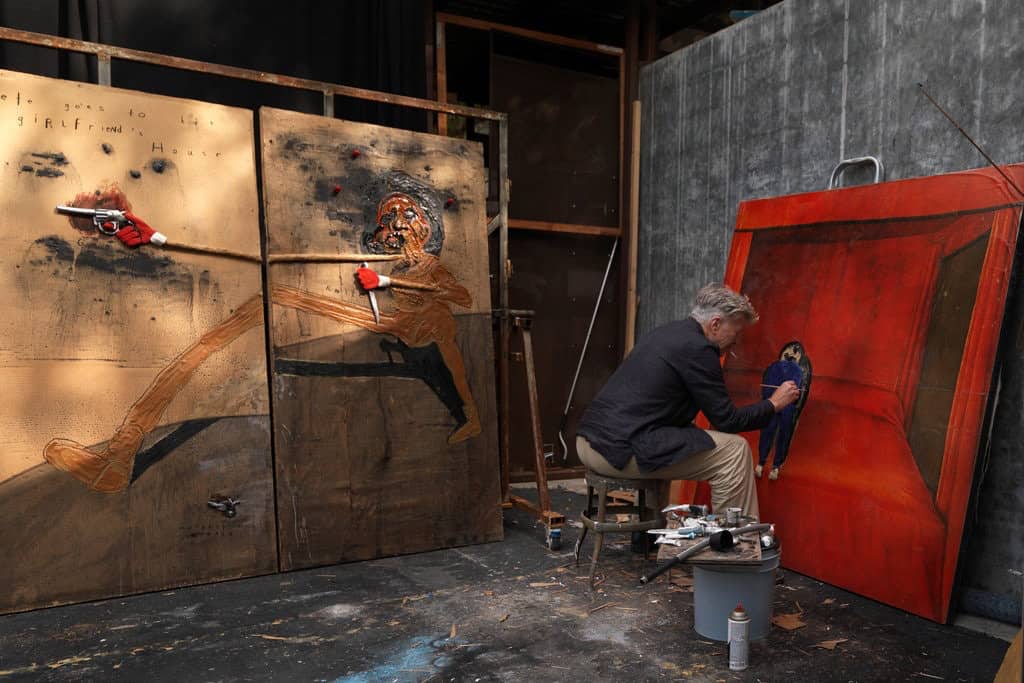
By Shira Wolfe
“You fall in love with the first idea, that tiny little piece. And once you’ve got it, the rest will come in time.”
David Lynch
This article series explores the lesser-known artistic output of contemporary artists who became known for another medium or genre of art. Often, great artists wear many different hats, but break through and achieve acclaim because of their work in one specific medium. We aim to highlight the multifaceted nature of their talent by shining a light not on what they are best known for, but on the lesser-known side of their artistic production. In our last edition, we featured psychedelic musical pioneer Don Van Vliet, who was also a talented painter. Now, the inimitable David Lynch, master of surrealism, neo-noir and American kitsch in contemporary cinema, is given centre stage as we focus not on his famous movies, but on his equally strange and wonderful paintings.
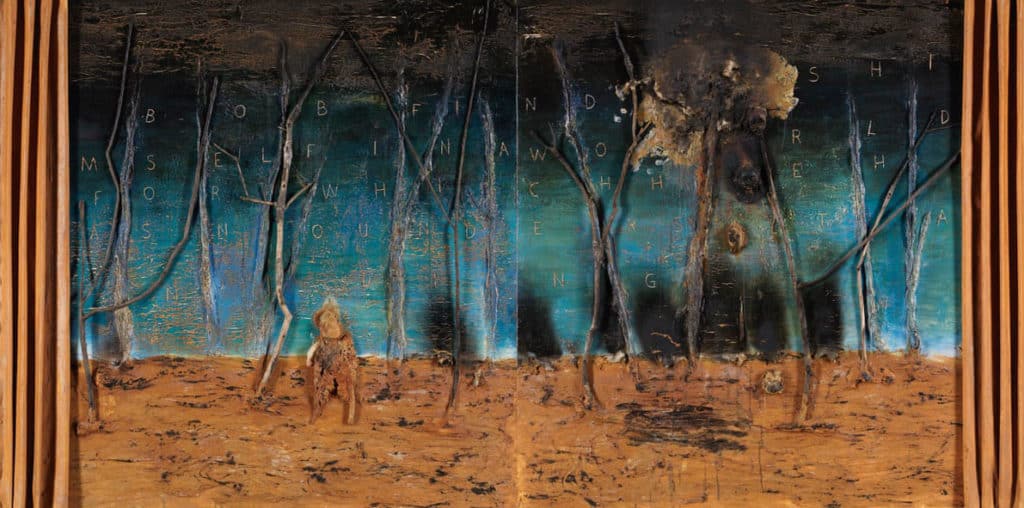
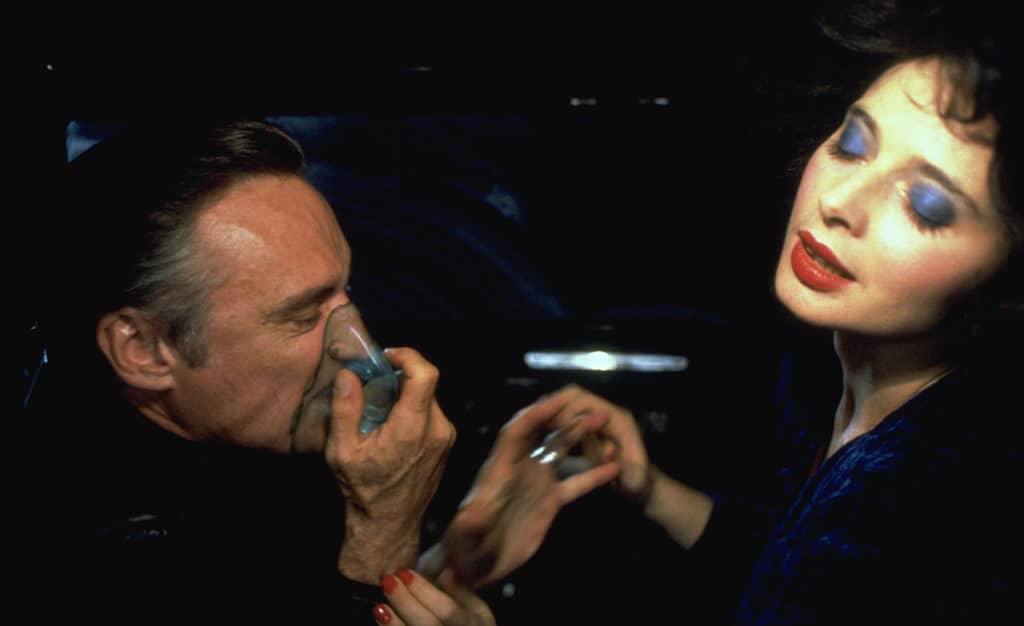
Who is David Lynch?
David Lynch is known for his idiosyncratic cinema, with which he creates bizarre, unsettling and unique worlds that inspire artists, filmmakers and musicians alike to attempt to create their own Lynchian atmospheres. Since making his first movie Eraserhead, a major cult classic, in 1977, Lynch has continued to blend surrealism, neo-noir, mundane American kitsch, mystery, horror and non-linear dream narratives into a cinematic language that is poignant, disturbing and seductive. His movies Blue Velvet (1986), Wild at Heart (1990), Lost Highway (1997), Mulholland Drive (2001) and Inland Empire (2006) were all critically acclaimed and connected to a wide audience, despite the fact that their style and stories are strange and sometimes difficult to grasp. Lynch has managed to achieve an interesting position in the world of cinema, as a director creating distinctly non-mainstream movies that nonetheless made it big in Hollywood with substantial box office success. Aside from these movies, he is perhaps best known for Twin Peaks (1990-1991 and 2017), the acclaimed murder-mystery television series which he created together with Mark Frost and which again seamlessly blends all-American kitsch with surrealism, horror and mystery.
In fact, every creative project Lynch approaches is tinged with his unmistakable fingerprints and he happens to be good at a lot of different things. While he is best known for his movies, he is also an accomplished musician with several albums under his belt, an excellent photographer, and an astounding painter who exhibits frequently. It is his painting that we will spend time with here, and in order to understand his painting, we need to take a look at the young David Lynch and how he started his life in art.
David Lynch: Biography and Movie History
In his book Catching the Big Fish – Meditation, Consciousness, and Creativity, Lynch describes how he first got into contact with art. He always liked to paint and draw but had determined that once you grew up, you would have to stop painting and drawing and start doing something more serious. One day, when he was in the ninth grade, he met a boy on the front lawn of his girlfriend’s house. This boy’s father was a painter, and as Lynch heard more about what this entailed, he suddenly knew that he wanted to be a painter too, living what he came to call “the art life.”
He believed that living the art life meant a complete dedication to painting, making everything else secondary. He went to the Pennsylvania Academy of the Fine Arts to study painting, and was fully consumed by it. In his words: “I had no interest in film. I would go to a film sometimes, but I really just wanted to paint.” The first moment he considered moving into the realm of film came one day when he was working on a painting at the academy. The painting was of a garden at night, and had a lot of black with green plants emerging from the darkness. Suddenly, the plants began to move and he heard a sound, which was the wind, emerging from the plants. This experience stuck with him, and made him start wondering whether film could be a way to make paintings move.
Lynch’s first foray into cinema after this experience with his painting came at the end of the school year, when he decided to actually make a “moving painting.” He built a sculptured screen and projected an animated stop-motion film on it, called Six Men Getting Sick (1966). The film shows six male figures in the process of getting sick and vomiting with a countdown as the audio component. When an older student saw the project and commissioned Lynch to build one for his home, the ball started rolling and little by little, Lynch fell deeply in love with the medium of film. Yet throughout his wildly successful film career, he never completely abandoned painting. He simply did it all.

The Angriest Dog in the World
While working on his first film, Eraserhead, Lynch came up with The Angriest Dog in the World comic strip. He drew a little dog that looked angry, and started looking at it and wondering why it was angry. Then he did a four-block strip with the dog never moving. Three panels were set in the day, one at night. Time passes, but the dog never moves. Lynch explains: “And it struck me that it’s the environment that’s causing the anger – it’s what’s going on in the environment. He hears things coming from the house. Or something happens on the other side of the fence, or some kind of weather condition.” Finally, he decided what would be interesting would be balloons of dialogue coming from within the house, with the dog outside. The strip was published once a week for nine years by the L.A. Weekly and later by the Baltimore Sun as well.
“I learned that just beneath the surface there’s another world, and still different worlds if you dig deeper. I knew it as a kid, but I couldn’t find the proof. It was just a feeling. There is goodness in blue skies and flowers, but another force – a wild pain and decay – also accompanies everything.”
David Lynch
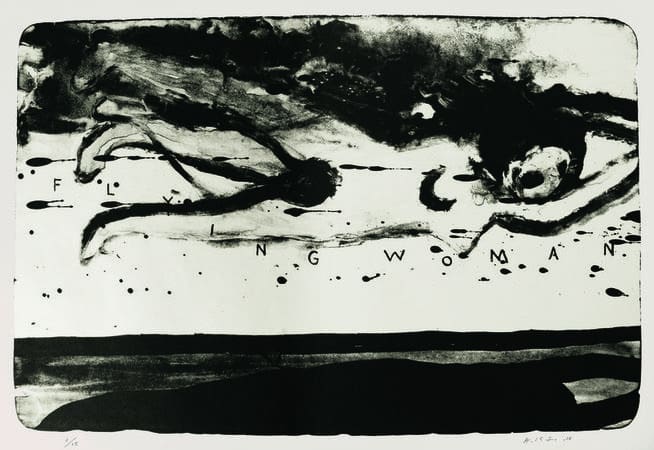
David Lynch’s Most Famous Paintings – Lynchian Surrealism, Text and Texture
From a visual point of view, the influence of Francis Bacon can be clearly seen in Lynch’s paintings, and from a conceptual point of view, there is the unmistakable legacy of Max Ernst, Marcel Duchamp and Man Ray, to name a few of the pioneers of Dada and Surrealism. Yet Lynch’s paintings remain absolutely unique, containing the same Lynchian surrealism that permeates his films, his music, and his photography.

Lynch likes to work a lot with text and texture in his paintings, creating dynamic scenes seemingly cropped from a larger narrative, and containing hermetic visual universes unto themselves. When speaking about texture, Lynch can speak passionately about anything from a rotting body to a cup of coffee: “I don’t necessarily love rotting bodies, but there’s a texture to a rotting body that is unbelievable. Have you ever seen a little rotted animal? I love looking at those things, just as much as I like to look at a close-up of some tree bark, or a small bug, or a cup of coffee, or a piece of pie. You get in close and the textures are wonderful.” His love for textures is evident in his paintings, in which his figures are often modelled in high relief from rough materials and textures.
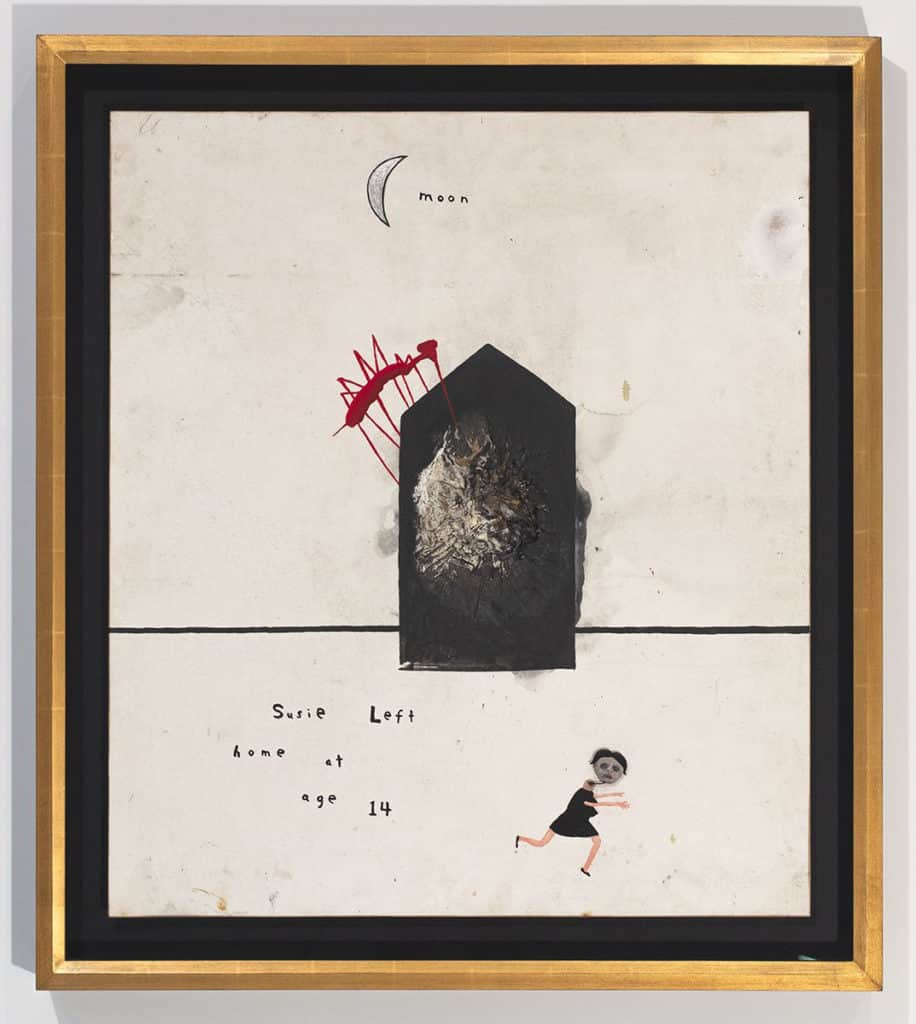
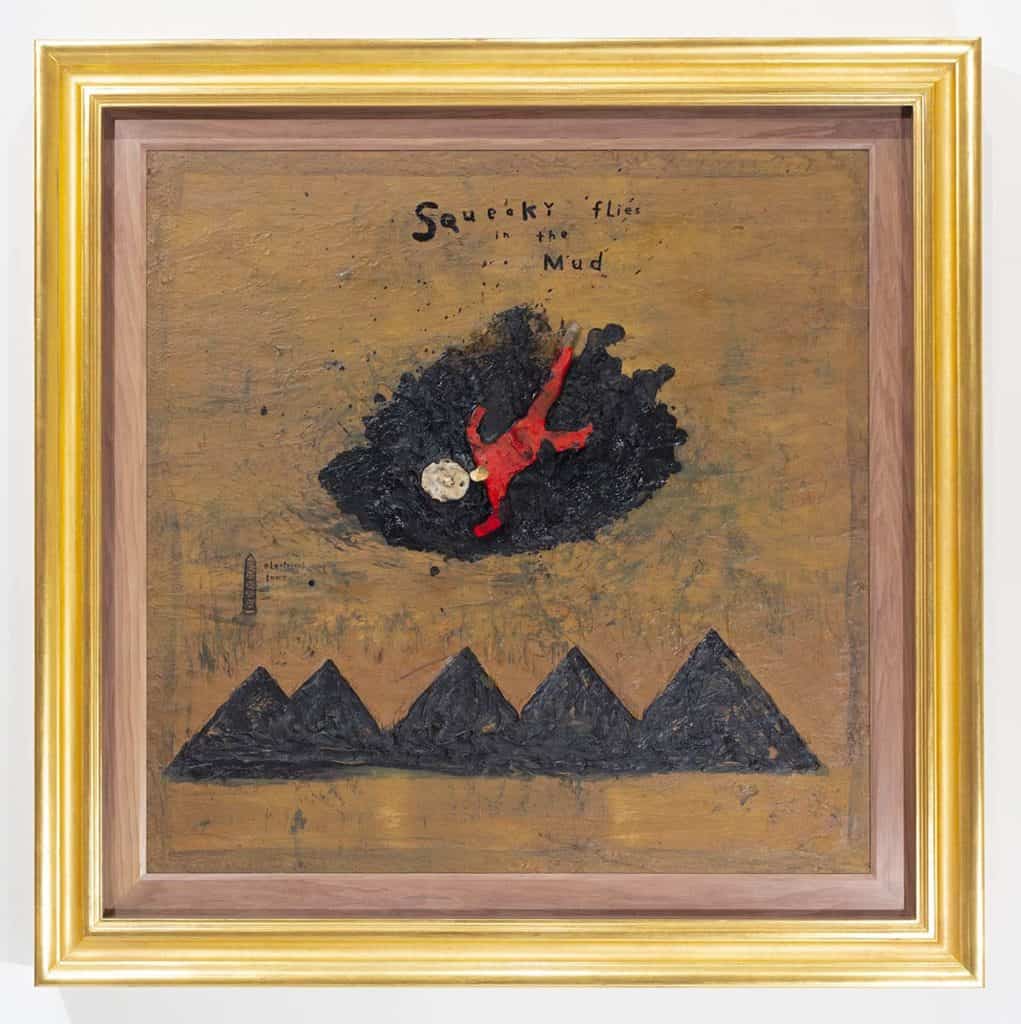
Imbuing his scenes with his unique language of surrealism and mystery, Lynch draws the viewers into the kind of sub-surface worlds he has been fascinated with all his life: “I learned that just beneath the surface there’s another world, and still different worlds if you dig deeper. I knew it as a kid, but I couldn’t find the proof. It was just a feeling. There is goodness in blue skies and flowers, but another force – a wild pain and decay – also accompanies everything.”
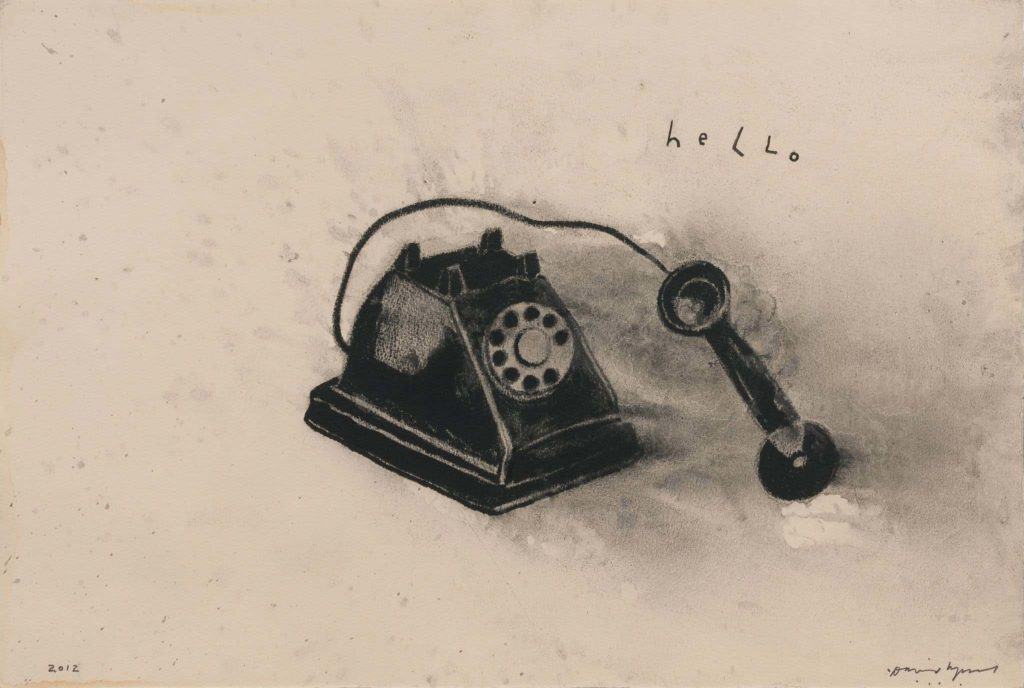
Where to Find David Lynch’s Paintings
Lynch has been showing his paintings for decades and has shown internationally, including solo shows at Leo Castelli Gallery in New York (1989), the Fondation Cartier in Paris (2007) and most recently, a massive retrospective at the Bonnefanten Museum in Maastricht (2019). The works on view at the Bonnefanten Museum ranged from tiny matchbook cover drawings to monumental paintings, and covered the entire period of his artistic output, starting with childhood sketches all the way through to his mature paintings. Today, his works are held in the collections of The Museum of Modern Art in New York and the Pennsylvania Academy of Fine Arts in Philadelphia. Lynch is represented by Kayne Griffin Corcoran in Los Angeles and has been exhibiting with the gallery since 2011. Such is the range of Lynch’s talent and productivity – from minuscule to massive, from painting to film, from the little boy to the artist he is today, there has always been this unwavering sense of his unique sensibility. Where do this attitude and insight come from? In his words:
“Even though I’m from Missoula, Montana, which is not the surrealistic capital of the world, you could be anywhere and see a kind of strangeness in how the world is these days.”
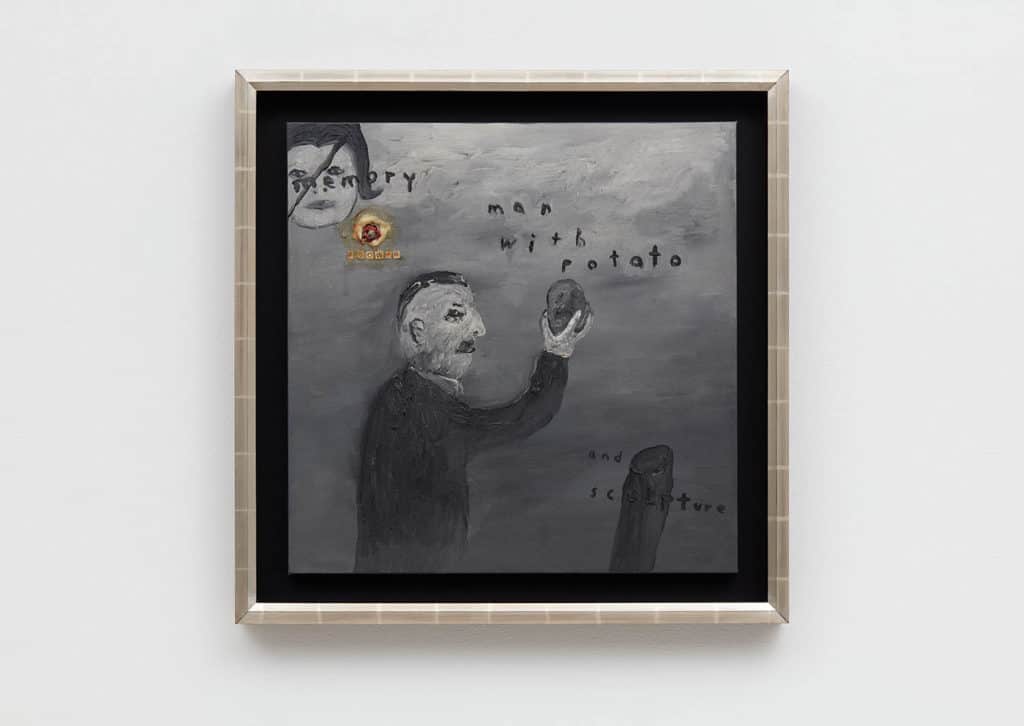
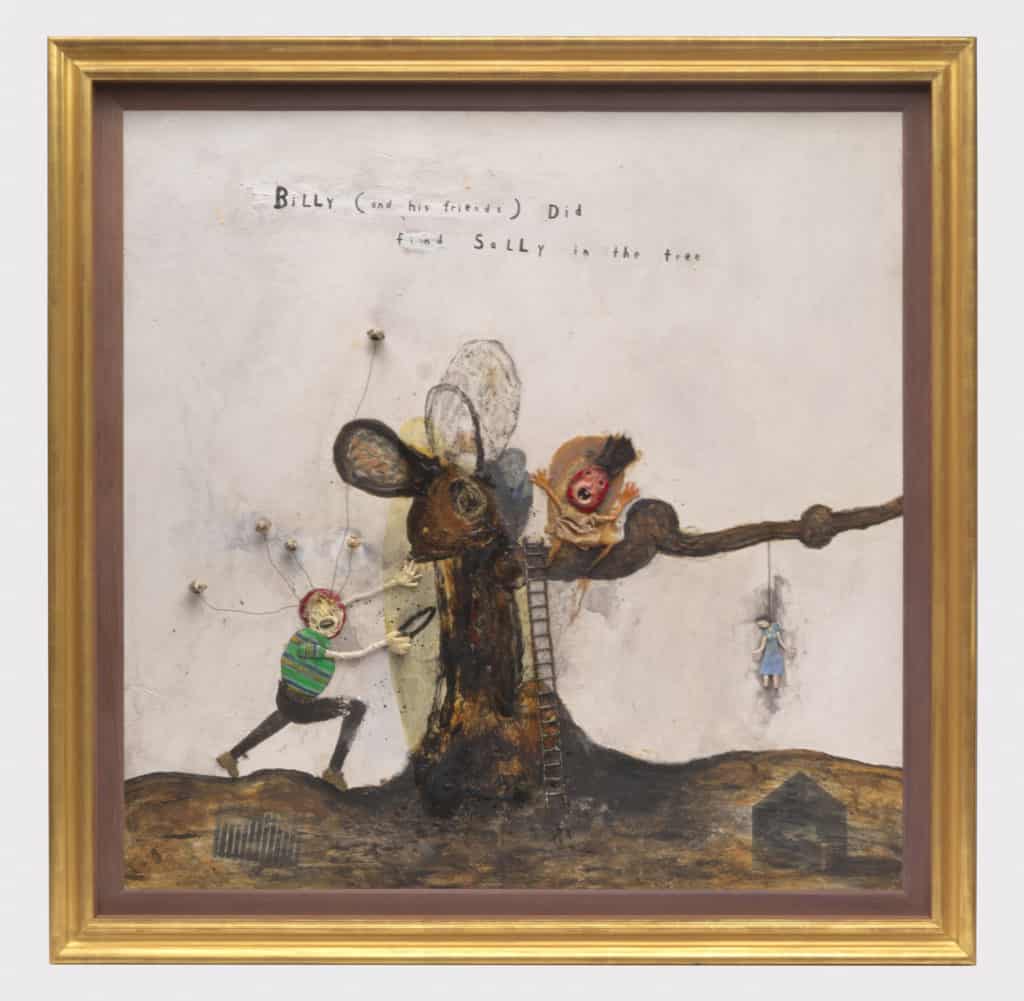
Relevant sources to learn more
Spot The Reference: Art-related Easter Eggs in David Lynch’s Twin Peaks
David Lynch’s book on meditation, consciousness and creativity, Catching the Big Fish (2007) is a fantastic, concise introduction to Lynch’s creative processes and approach to art and meditation.
For other sources, see:
Sperone Westwater Gallery
Kayne Griffin Corcoran Gallery
Bonnefanten Museum Maastricht